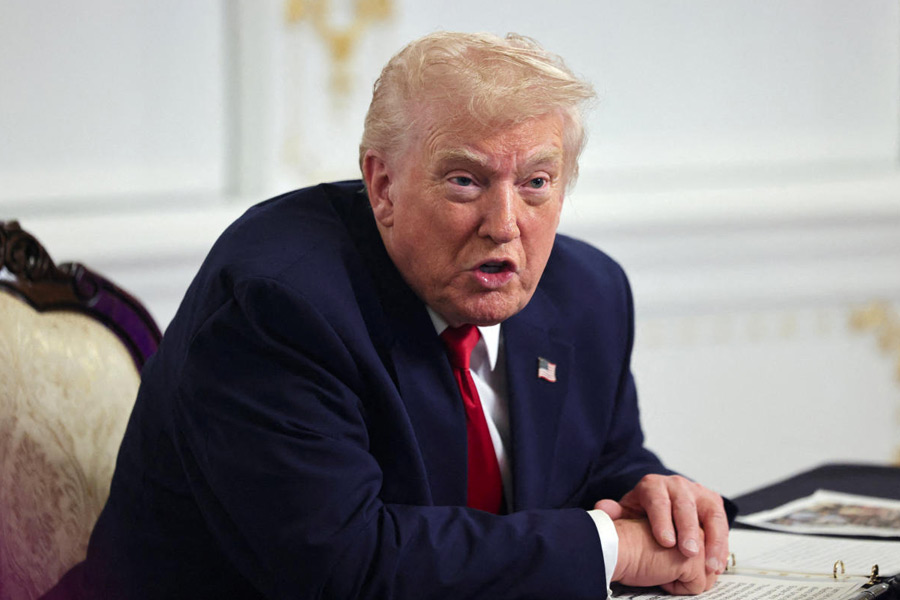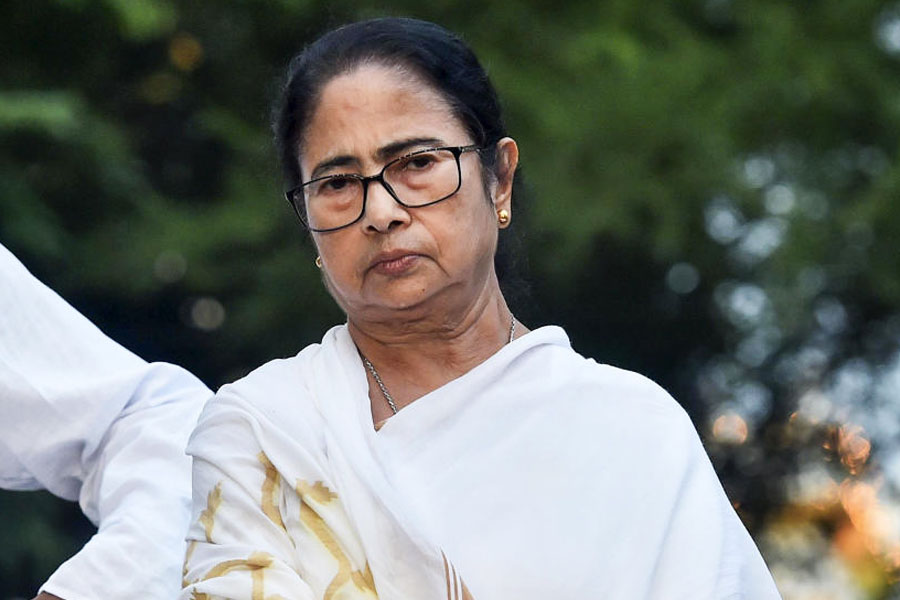 |
So you can’t afford to splash out on that ultra luxe Fendi it bag right now. Not when the economy is down in the dumps and you are wondering if you’ll get that fat bonus this year. And certainly not when you’ve already had a fair bit of your money flattened in the stock market. Do you then stay home and mope about your reduced circumstances? Hell, no, you just go out and buy yourself a nice, luscious lipstick. It’s cheap, it can make you look sexy, and it’s guaranteed to make you feel a whole lot better when there’s economic doom and gloom all around.
That, in a nutshell, is the idea behind the so-called “lipstick index,” a term coined by Leonard Lauder, the chairman of cosmetic giant Estée Lauder, during the downturn of 2001. The theory goes that the sale of lipsticks shoots up during recessionary times because, unable to splurge on luxury goods, women tend to reach for cheaper feel-good stuff such as lipsticks. In other words, when consumer confidence is down, the demand for cosmetics goes up. In fact, even during the Great Depression in the 1930s cosmetic sales went up by 25 per cent. In the post 9/11 recession of 2001 too, lipstick sales in the US rose by 11 per cent.
It’s no different this time, says Dhaval Joshi, an analyst at international investment management firm RAB Capital. According to Joshi, recent sales figures from cosmetic biggies L’Oréal, Beiersdorf and Shiseido suggest that European consumers are spending more on cosmetics at a time when they are spending less on nearly everything else.
 |
Sounds far fetched? Then take a look at lipstick sales in our own country in recent months. According to Nielsen, the market research firm that tracks retail sales, lipstick sales (in volume terms) grew by 15.4 per cent in 2008. Of course, that’s modest compared to the almost 23 per cent growth rate the industry clocked up in 2007 — a fact that potentially undermines the “lipstick effect” theory. But look closely at the 2008 numbers (see below) and you’ll find that sales raced ahead as the year wore on and the economic slowdown began to bite.
Clearly, the numbers make a fair case for a scenario where more and more women (probably leery of sinking a bomb on a sinful pair of Jimmy Choos) are looking to the humble, and infinitely cheaper, lipstick to give themselves a shot of that ultimate upper — retail therapy.
Although officials at many of the international luxury brands were not available for comment, there is every indication that their sales in India have taken a beating of late. The super rich — who are relatively immune to such “mild” economic contretemps — may continue to buy, but the fiercely aspirational Indian arriviste, who had been riding on the country’s economic boom, certainly seems to be cutting back on high end apparels and accessories. Kamal Bharucha, director (retail), Entrack International Trading Pvt Ltd, which represents Mont Blanc in India, admits, “Business during the last quarter has not met our expectations. But we look at this time as an opportunity to tap a segment of audiences that we had never reached out to earlier.”
Significantly, luxury brands such as Gucci, Jimmy Choo, Salvatore Ferragamo and others have announced discount sales in recent months — something they rarely do. “In fact, Gucci as a brand has always had a no-discount policy,” says Pratichee Kapoor, principal consultant, Technopak Advisors Pvt Ltd, a Delhi-based management consulting company that studies consumer trends. If the rush of discounts is anything to go by, it’s fairly obvious that consumers are not homing in on luxury products with quite as much alacrity as before.
That is one reason the so-called “lipstick effect” could well be an indication of the prevalent economic mood. Says D.H. Pai Panandikar, economist and president of the RPG Foundation, a private sector think tank that tracks the economy, “During a downturn, consumer confidence drops. So consumption shifts from high value to low value goods. The ‘lipstick effect’ would be a reflection of that shift.”
Agrees Sumita Kale, chief economist, Indicus Analyticus, a Delhi-based research firm. “Indicus estimates discretionary spending to grow by 4 to 5 per cent in 2008-2009 versus a 15 to 16 per cent growth per annum in the last three years. I would expect consumers to move away from high end branded stuff to relatively cheaper goods that still give them some comfort in the luxury zone. For example, they would still eat out at a mall but they wouldn’t shop at a luxury store in the same mall.”
There is, of course, a raft of data to suggest that consumer confidence has plummeted even though the economy may still be growing by 7 per cent. The demand for residential units was down by about 30 per cent in the last quarter. A Consumer Activity Index prepared by the Future Group (the holding company of Pantaloons and Big Bazaar) which incorporates data on passenger vehicle sales, a house rental price index, credit card consumption, mobile phone sales and in-house data on retail sales, shows that consumer activity, though still growing, is at its slowest in the last five years.
Explains Amit Adarkar, managing director, Market Probe, India and Dubai, “People may have the money, but they are holding back, they are not upgrading, or are postponing the purchase of big ticket items.”
Seen in this context, the dramatic rise in the sale of lipsticks in India would seem to suggest that the “lipstick effect” has kicked in here as well. And that lipsticks — glossy, matte, long-wearing and what have you — have become a girl’s best friend in these bleak economic times. Certainly, the theory fits in neatly with pop psychology too. Says Paramita Mitra Bhowmik, a Calcutta-based consultant psychiatrist, “A recession is a time of frustration, depression and gloom. So people try to seek some positivity from wherever they can. For women, buying a new dress or jewellery to cheer themselves up is a more expensive proposition than investing in a lipstick. And yet a lipstick can also make you look good or look different. This look good factor translates into a feel good factor.”
Yet critics of the theory point out that while retail therapy on the cheap — a Lakmé lipstick can come for as little as Rs 175 — can work as an emotional pep pill at times, it can’t really account for a huge jump in sales. “Sure, this kind of retail therapy may be going on,” says Adarkar. “But will it contribute to a big chunk of the growth in sales? I doubt it.”
Rajesh Shukla, senior fellow at the Delhi-based think tank National Council of Applied Economic Research, too believes that there is more theory to the “lipstick effect” than there is substance. “If there has been a spike in sales in the last few months, it is because this is also the festival and wedding season when the sale of such items go up in any case,” he points out. “Besides, the fast moving consumer goods (FMCG) industry has really not been affected by the downturn.”
Indeed, the most compelling argument against the “lipstick effect” is that lipsticks are a part of FMCG products in general and personal care products in particular — sales of both of which have grown at a healthy clip despite the current economic slowdown. In fact, recent government data pegs FMCG growth at an impressive 26.4 per cent during the last quarter.
“FMCG is one industry which has been isolated from this slowdown,” asserts Kapoor of Technopak. “That’s because you don’t stop consuming a soap or a toothpaste, you don’t change your basic lifestyle just because there is a downturn.”
So can we single out the upsurge in the sale of lipsticks as the definitive indicator of the fact that consumers are compensating their yearning for expensive indulgences with affordable lip colour? Probably not. Nielsen data show that between October and December 2008, sales of personal care products as a whole grew sharply. If lipstick sales grew by 31 per cent, sales of perfumes grew by 53.7 per cent, and that of shampoos by 20.2 per cent. Hence lipsticks are just one among many personal care products that have bucked the trend in this period of economic gloom.
Still, what’s obvious is that even when they cut back on high end fripperies, people do like to keep themselves buffed, polished and fragrant. Perhaps recessions are a time to put one’s best face forward. Perhaps in downturns to come, we shall have a “perfume effect,” or, for that matter, a “shampoo effect.” At least that will bring the men into the picture. For now, though, it’s lipsticks that are adding a dash of colour to the myriad theories swirling around the fringes of the global economic meltdown.
CELEBRATING THE SLOWDOWN
Lipstick sales growth in 2008 15.4 %
Growth in the first half of 2008 5.9 %
Growth in the second half of 2008 24.8 %










